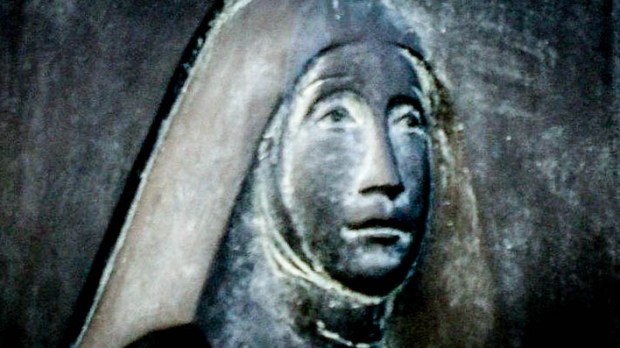Lenten Campaign 2025
This content is free of charge, as are all our articles.
Support us with a donation that is tax-deductible and enable us to continue to reach millions of readers.
There’s little that’s more discouraging in life than a feeling of aimlessness, an uncertainty about the future and even about the present. Those who live in this uncertainty—particularly when it comes to discerning what God is asking of you—can find an intercessor in Blessed Maria Therese von Wüllenweber, who entered and left three different religious communities before finally settling down at 55.
Born in a German castle, Therese von Wüllenweber (1833-1907) seemed destined to an ordinary life, or as ordinary as it gets for the daughter of a baron. After a boarding school education, she was expected to marry well and raise noble children. But from her youth, Therese knew she was called to something else.
Though her father was a man of faith, he was at first dismayed by Therese’s desire to enter religious life. With her mother’s help, Therese convinced him of the sincerity of her vocation and at 24 she entered the Sisters of the Sacred Heart. His misgivings must have been strengthened when Therese’s mother died of a stroke only a few weeks later, but Therese persevered, determined to follow God’s will for her.
After six years of striving to belong in her community, Therese finally discerned that she had to belong to a community that focused primarily on the poor. Any woman who has left religious life can tell you this must have been an agonizing decision for Therese, likely followed by a period of intense mourning and self-doubt.
For Therese, however, there was no gentle transition back to the world. The day she arrived home, she had her father take her to visit the Visitation Sisters. Just like her previous order, they were too separated from the world. Therese longed to be with the people, living and working alongside them. This time, it only took a few weeks before she left.
After five years of prayer, discernment, and healing, Therese tried again: the Sisters of Perpetual Adoration and Help for Poor Churches. These Sisters worked with the poor. They weren’t bound by strict rules of enclosure. Therese was finally at home.
But the poor wanderer was more concerned with being a follower of Jesus than with having a plan. In 1870, after two years with the Sisters of Perpetual Adoration, she was back home, 42 years old and wondering again when the Lord would give her something permanent.
In all her years of waiting, Therese’s life was not without meaning. She lived with her family, served them in illness, and enjoyed a life of deep prayer. In 1875, she made a private vow to live entirely for the sake of the missions, a baroness who spent most of her time with orphans and the desperately poor. Still, she had been called to religious life, and a religious without a community will always feel unmoored.
Though other women came to live with her at the old Benedictine abbey she bought, the political situation in Germany made it impossible to found a new religious order. Finally, in 1882, Providence connected her with Venerable Francis Mary Jordan, who had recently founded the Apostolic Teaching Society (later the Salvatorian Fathers). The two were kindred spirits, sharing a vision of the work God was calling them to, and within two months Therese had made vows into Fr. Jordan’s hands, taking the name Sr. Mary Therese.
But her time in the desert wasn’t over yet. While Therese was superior of her small, unofficial community, another community of Sisters was being formed in Rome, and they took a very different view of what their life ought to be like. In 1885, they separated from Fr. Jordan’s community, leaving only Sr. Mary Therese and one companion in a difficult situation. They were advised to lie low until things in Rome had calmed down, so Sr. Mary Therese had another three years of waiting and wondering.
Finally, the summons came, and Sr. Mary Therese left Germany for good. At 55, she had finally found her vocation: to be a Salvatorian Sister among the Italian poor. She received her habit and her name: Sister Mary of the Apostles. The Sisters were terribly poor. They couldn’t communicate with their Italian neighbors. One contracted smallpox. But Sister Mary of the Apostles was finally at peace: in making vows as a Salvatorian, she felt her life was complete.
By the time Mother Mary of the Apostles died (on Christmas Day, 1907), the Salvatorian Sisters were working in schools, hospitals, and homeless shelters in Europe and Asia. Today, they work in many different fields on five continents, with special attention given to rescuing victims of human traffiicking.
Blessed Maria Therese von Wüllenweber spent most of her life searching for her vocation, seeking to do God’s will without any idea what that meant. On December 25, her (much-overshadowed) feast day, let’s ask her intercession for all those who are discerning where God’s calling them in life, especially those who have become discouraged by many years of wandering. Blessed Maria Therese von Wüllenweber, pray for us!

